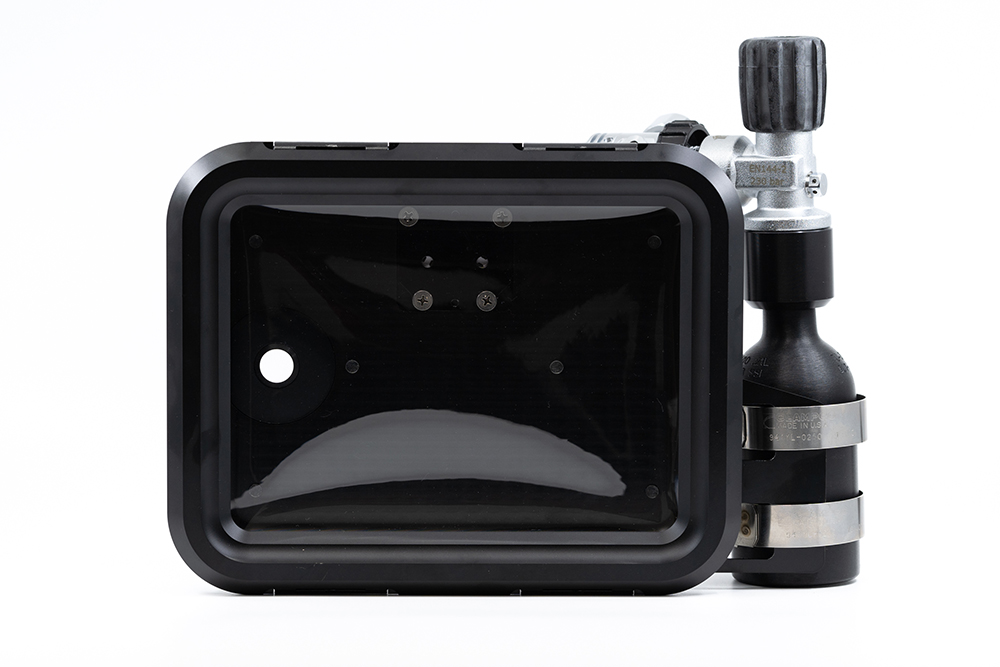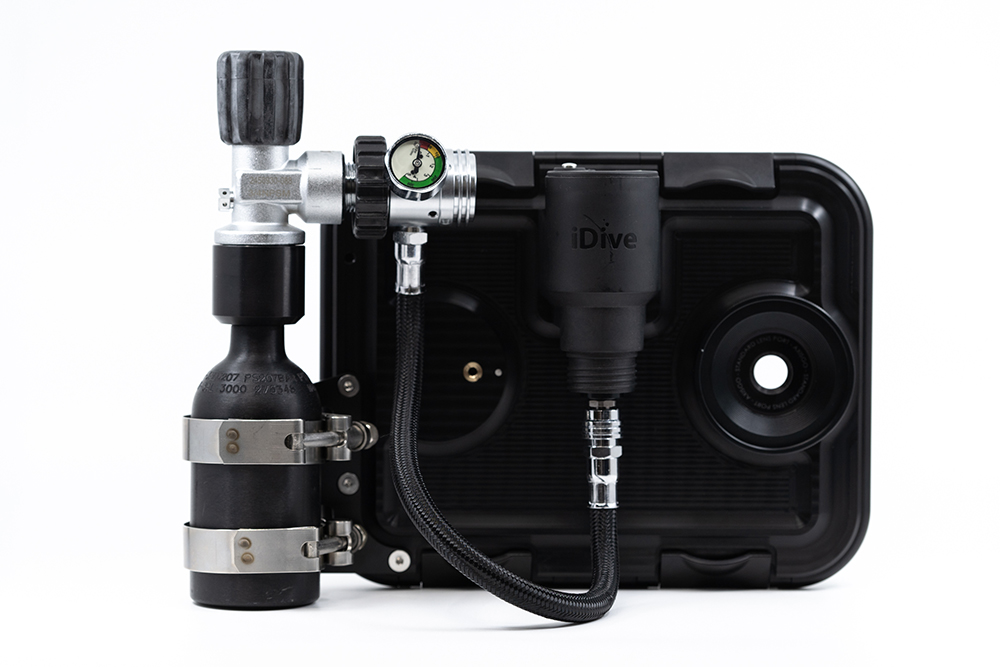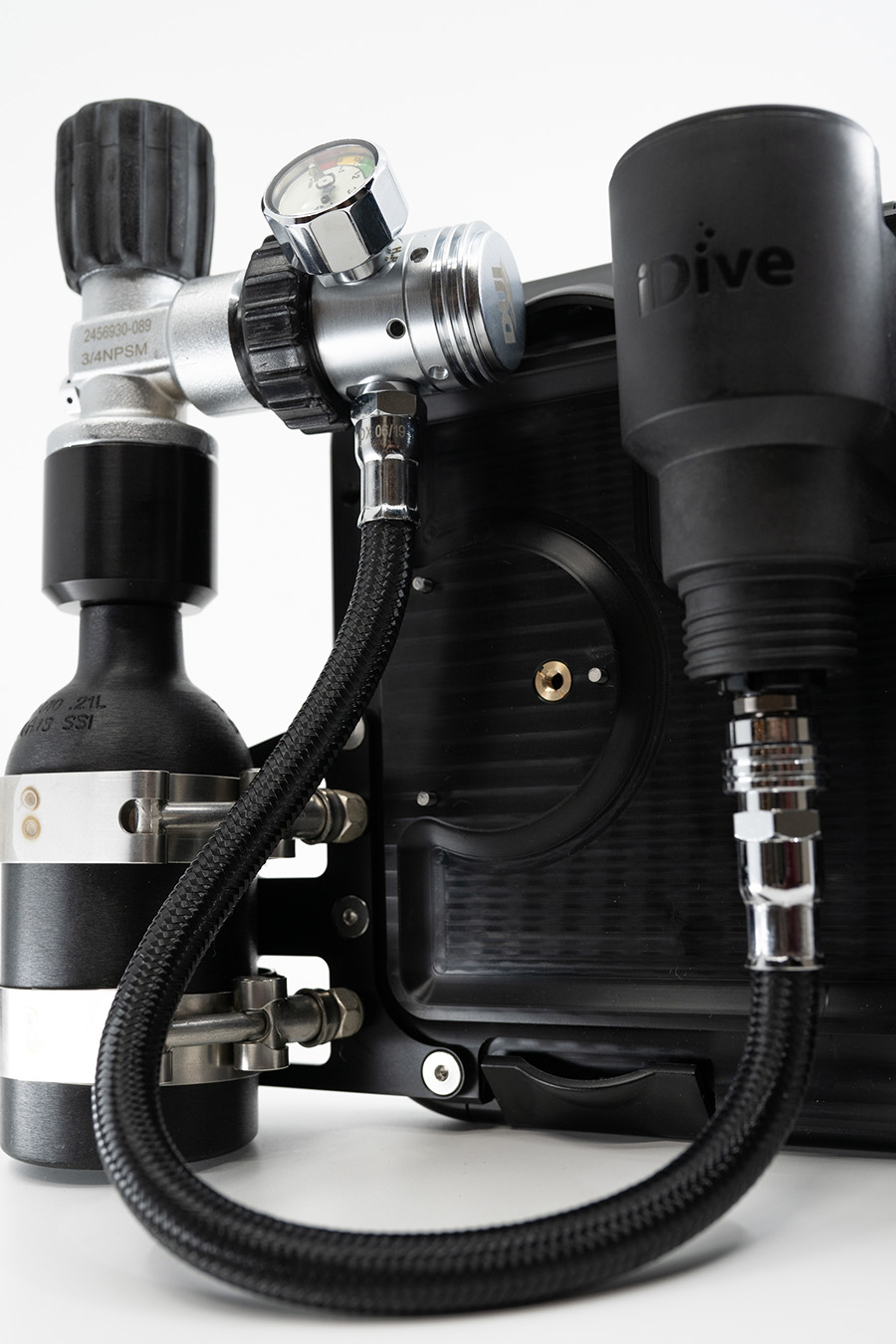
Deep-Sea Product Development
iPad Housing (iDive)
While the rest of the world now conducts data collection with digital tools, the underwater industry still struggles to record and communicate information with a combination of underwater pencils and slates, hand signals, and hardwired headsets in heavy dive helmets. No one knows this struggle better than Michael Berumen, PhD, professor and director of marine science at the Red Sea Research Center at King Abdullah University of Science and Technology (KAUST) in Saudi Arabia. Like many other marine biologists, Dr. Berumen collects data while scuba diving, and the data gathered during just a few dives can take months to enter and analyze.
In most waterproof mobile device cases, the device is protected from water, but the touchscreen can’t be used, either because a soft membrane is pushed against the entire screen by the pressure of the water, or because a hard case prevents contact with the screen at all. Furthermore, if these cases are taken deep enough, the water pressure acting on the device touchscreen will eventually break the glass on the screen. Without a gap between the case and the touchscreen, finger contact is not recognized by the device, as it would be above water, since water creates a capacitive connection.
Imagine the frustration of taking hundreds of pictures with an iPad in a waterproof housing, writing manual notes on underwater paper to track which photos were taken where and what they signify, knowing that the perfect computing abilities to automatically log that information for you are right in your hands, but the touchscreen is locked behind a hard waterproof case. While you work, quickly and meticulously, your dive computer counts down how much oxygen you have left. After you surface, you’ll spend hundreds of hours assigning data points to each photo before you can even begin your analysis.
Dr. Berumen knew there had to be a way to access his touchscreen underwater and make his data collection more efficient, something that other commercial housings weren’t providing. He put his iPad in a large Ziploc bag, blew some air into the Ziploc, sealed it, then submerged the entire system in a tray of water. This allowed him to use the iPad touchscreen interface while keeping it dry. But who could develop his idea? He set up the tray at an industry conference and it caught the eye of Jim Peña at Inova. After talking for a few minutes, Jim knew the idea was doable. Of course, Michael’s idea was demonstrated at very low pressure: how could it work at greater depths?
At Inova, we distinguish between ideas, concepts, and designs. Michael presented Jim with an idea, and it required research, sketches, technical feasibility explorations, and expertise in physics and ingress protection to move it to a concept phase. Next, the concept was coalesced in a maze illustration. To move from concept to design, Inova provided applied engineering, materials selection, assembly, testing, and fit and finish expertise.



The iDive can be used with either liquid CO₂ cartridges (~800 psi gaseous CO₂) or with first-stage regulator air pressure (~100 psi) as the input. A unique pressure-balancing mechanism, called a “balance module,” uses the input (CO₂ or air) in direct proportion to the ambient water pressure. The deeper you take the system, the higher the ambient water pressure, and hence, the more CO₂ or air used to pressure-balance the interior of the system. This action protects the device from crushing during descent by limiting the differential between the ambient and internal pressure. This differential pressure is maintained in minimal negative range, safe to the device. With the system pressure negative during a descent, the membrane maintains contact with the device touchscreen and is not usable. Any time you wish to use the device, the internal pressure must be increased slightly via a smart valve, to a very small, specific, positive pressure, to create a gap between the membrane and the screen without the membrane being so tight as to render it too stiff for ease of use. It is a product that can be taken to depths of 100 meters or more.
The iDive resulted in two new patents (US 10,281,933 B2 and US 20130025904A1) and has been used by underwater researchers around the world. It is the only underwater touchscreen system known to exist that allows the iPad to be removed from the housing for other uses. The product caught the attention of Apple, who subsequently used the product in their “What’s Your Verse?” iPad advertising campaign, where Apple highlights the far-reaching places and applications people have used their products. It won first place in the 2015 IAPD design competition. Development continues for follow-on products.
